Vijay Anand
A Contactless Fingerprint Recognition System
Aug 20, 2021


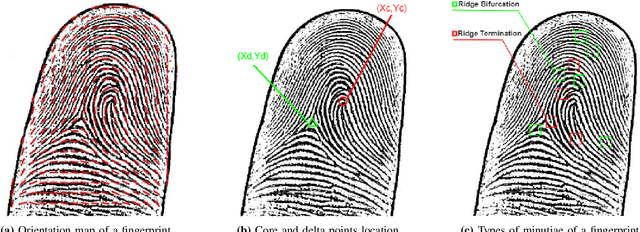
Abstract:Fingerprints are one of the most widely explored biometric traits. Specifically, contact-based fingerprint recognition systems reign supreme due to their robustness, portability and the extensive research work done in the field. However, these systems suffer from issues such as hygiene, sensor degradation due to constant physical contact, and latent fingerprint threats. In this paper, we propose an approach for developing a contactless fingerprint recognition system that captures finger photo from a distance using an image sensor in a suitable environment. The captured finger photos are then processed further to obtain global and local (minutiae-based) features. Specifically, a Siamese convolutional neural network (CNN) is designed to extract global features from a given finger photo. The proposed system computes matching scores from CNN-based features and minutiae-based features. Finally, the two scores are fused to obtain the final matching score between the probe and reference fingerprint templates. Most importantly, the proposed system is developed using the Nvidia Jetson Nano development kit, which allows us to perform contactless fingerprint recognition in real-time with minimum latency and acceptable matching accuracy. The performance of the proposed system is evaluated on an in-house IITI contactless fingerprint dataset (IITI-CFD) containing 105train and 100 test subjects. The proposed system achieves an equal-error-rate of 2.19% on IITI-CFD.
Cross-sensor Pore Detection in High-resolution Fingerprint Images using Unsupervised Domain Adaptation
Aug 28, 2019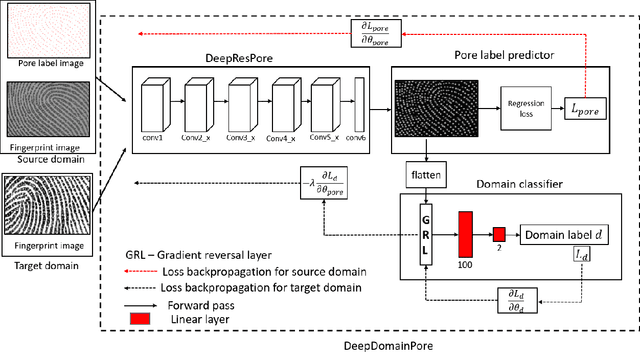



Abstract:With the emergence of the high-resolution fingerprint sensors, the research community has focused on level-3 fingerprint features especially, pores for providing the next generation automated fingerprint recognition system (AFRS). Following the recent success of the deep learning approaches in various computer vision tasks, researchers have explored learning-based approaches for pore detection in high-resolution fingerprint images. These learning-based approaches provide better performance than the hand-crafted feature-based approaches. However, domain adaptability of existing learning-based pore detection methods has not been examined in the past. In this paper, we present the first study of domain adaptability of existing learning-based pore detection methods. For this purpose, we have generated an in-house ground truth dataset referred to as IITI-HRF-GT by using 1000 dpi fingerprint sensor and evaluated the performance of the existing learning-based pore detection approaches on it. Further, we have also proposed an approach for detecting pores in a cross sensor scenario referred to as DeepDomainPore using unsupervised domain adaptation technique. Specifically, DeepDomainPore is a combination of a convolutional neural network (CNN) based pore detection approach DeepResPore and an unsupervised domain adaptation approach included during the training process. The domain adaptation in the DeepDomainPore is achieved by embedding a gradient reversal layer between the DeepResPore and a domain classifier network. The results of all the existing and the proposed learning-based pore detection approaches are evaluated on IITI-HRF-GT. The DeepDomainPore provides a true detection rate of 88.09%and an F-score of 83.94% on IITI-HRF-GT. Most importantly, the proposed approach achieves state-of-the-art performance on the cross sensor dataset.
PoreNet: CNN-based Pore Descriptor for High-resolution Fingerprint Recognition
May 16, 2019
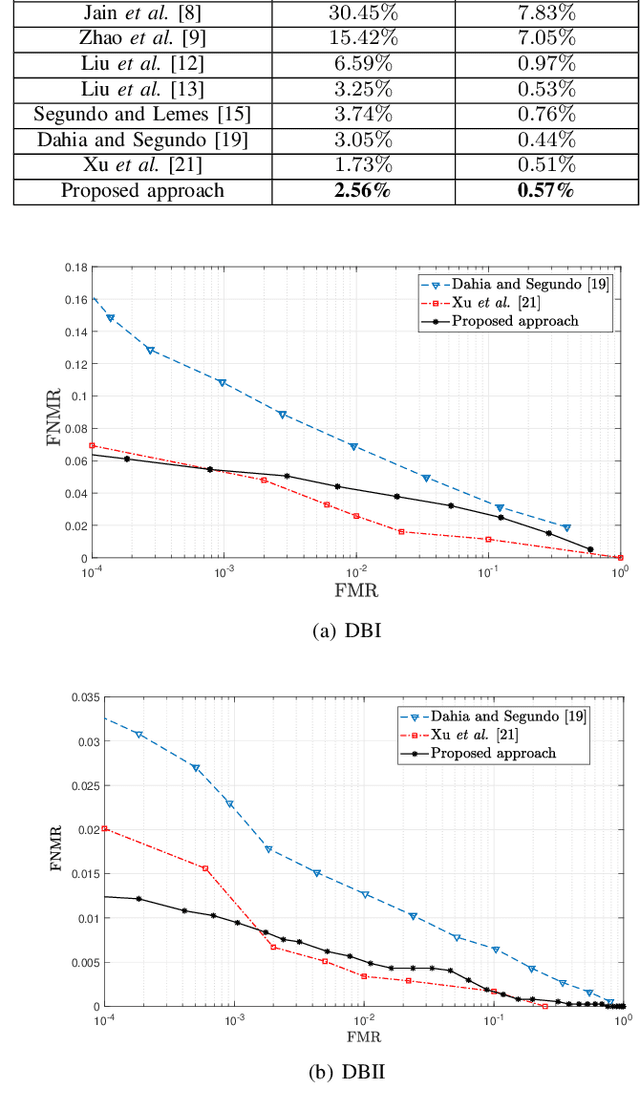
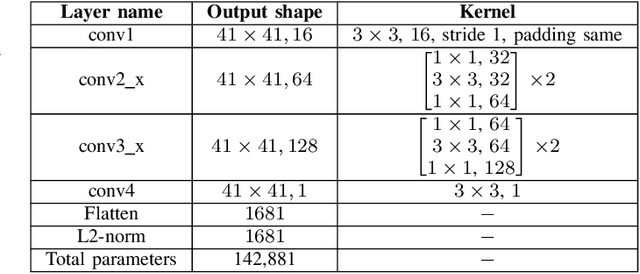
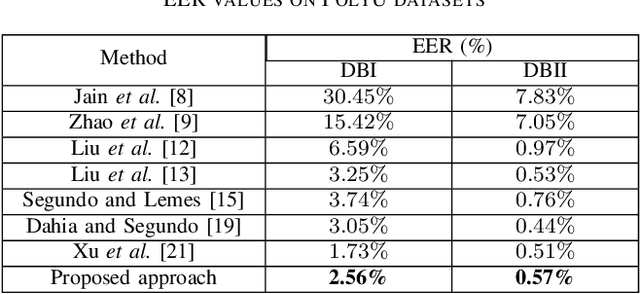
Abstract:With the development of high-resolution fingerprint scanners, high-resolution fingerprint-based biometric recognition has received increasing attention in recent years. This letter presents a pore feature-based approach for biometric recognition. Our approach employs a convolutional neural network (CNN) model, DeepResPore, to detect pores in the input fingerprint image. Thereafter, a CNN-based descriptor is computed for a patch around each detected pore. Specifically, we have designed a residual learning-based CNN, referred to as PoreNet that learns distinctive feature representation from pore patches. For verification, the match score is generated by comparing pore descriptors obtained from a pair of fingerprint images in bi-directional manner using the Euclidean distance. The proposed approach for high-resolution fingerprint recognition achieves 2.56% and 0.57% equal error rates (EERs) on partial (DBI) and complete (DBII) fingerprints of the benchmark PolyU HRF dataset. Most importantly, it achieves lower FMR1000 and FMR10000 values than the current state-of-the-art approach on both the datasets.
Pore detection in high-resolution fingerprint images using Deep Residual Network
Sep 20, 2018



Abstract:This letter presents a residual learning-based convolutional neural network, referred to as DeepResPore, for detection of pores in high-resolution fingerprint images. Specifically, the proposed DeepResPore model generates a pore intensity map from the input fingerprint image. Subsequently, the local maxima filter is operated on the pore intensity map to identify the pore coordinates. The results of our experiments indicate that the proposed approach is effective in extracting pores with a true detection rate of 94:49% on Test set I and 93:78% on Test set II of the publicly available PolyU HRF dataset. Most importantly, the proposed approach achieves state-of-the-art performance on both test sets.
 Add to Chrome
Add to Chrome Add to Firefox
Add to Firefox Add to Edge
Add to Edge